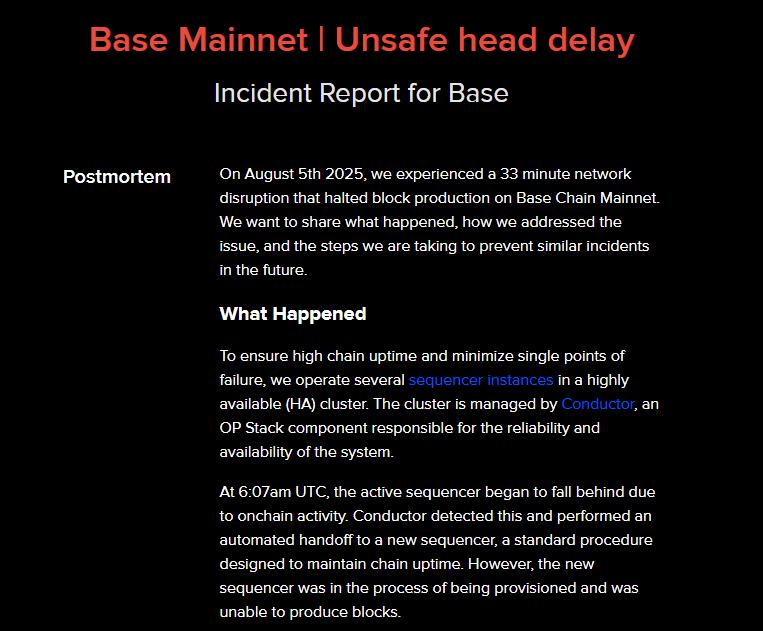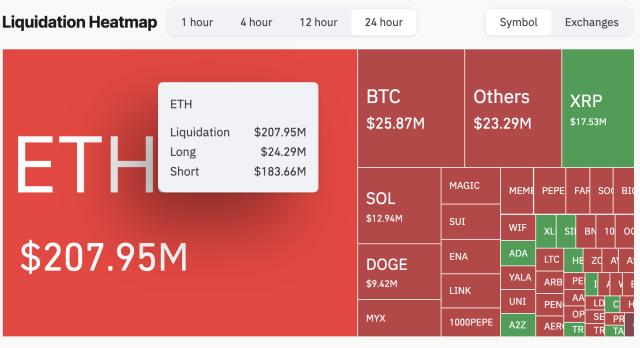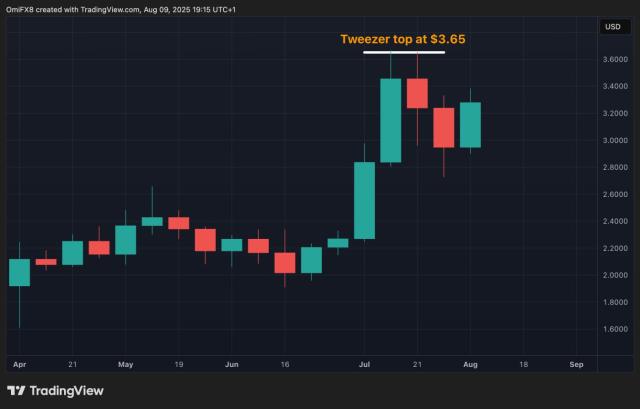Written by: Luke, Mars Finance
On August 5, 2025, it was a moment worth reviewing for the entire Layer 2 track. Base, the star network crafted by Coinbase and attracting countless eyes during the "Onchain Summer" event, unexpectedly interrupted its block production for 33 minutes. Against the backdrop of Base carrying billions of dollars in assets and repeatedly breaking daily trading volume records, this interruption was tantamount to an "engine stalling" on a highway. However, when we shift our focus from the chaos of the failure to the chain reaction it triggered in the ecosystem, an unexpected winner emerged. This seemingly unrelated L2 network incident provided Chainlink with an unparalleled, industry-wide value demonstration, profoundly answering the question of "why LINK is crucial in the multi-chain era".
A "Model Student's" Automation Failure
To understand the deep impact of this event, we must first precisely review the failure itself. Base was designed to be a highly available network, for which it adopted a high-availability cluster composed of primary and backup sequencers. When the primary sequencer fails, an automated management component called op-conductor would immediately switch work to the backup node, theoretically achieving a seamless transition imperceptible to users.
On the day of the incident, due to the extreme activity of the Base ecosystem and surging on-chain transaction volume, the primary sequencer became overwhelmed, resulting in significant transaction processing delays. This triggered the op-conductor's automatic switching mechanism. However, this automation system intended to provide security became the trigger point for the accident. The official post-event analysis pointed out that the target backup sequencer being switched to had not yet completed its entire online configuration process. In simple terms, it was a "software started but state not synchronized" half-finished node. This node not only could not assume the leader's role but, more critically, could not initiate a new switch to hand over leadership to other healthy nodes in the cluster.
This created a dangerous deadlock situation: the primary node had abandoned leadership according to instructions, but the designated "successor" was powerless to take over. To prevent a "split-brain" disaster where two sequencers might produce blocks simultaneously, the entire network could only remain stagnant until the engineering team performed an emergency manual intervention, forcibly designating a healthy sequencer to resume block production.

Placed in the industry context, the uniqueness of this incident becomes increasingly prominent. It forms a sharp contrast with Arbitrum's downtime in September 2021. At that time, Arbitrum experienced a collapse due to an undiscovered bug in its sequencer software when facing an instant transaction flood. That was a typical "software robustness" issue. Base's problem, however, was a failure in "automation process reliability". This reveals that in complex distributed systems, mechanisms designed to enhance reliability can themselves become the most fragile link. It perfectly illustrates the profound challenges faced by L2 in pursuing performance, security, and decentralization in the Blockchain Trilemma: the operational risks of centralized sequencers for efficiency are far more complex than imagined.
(Translation continues in the same manner for the rest of the text)In summary, Base's 33-minute downtime is a serious technical setback and operational lesson for Base itself. However, for the entire industry, especially for LINK, this is an extraordinarily valuable "black swan" marketing event. It proves Chainlink's core position and irreplaceability in an increasingly complex cross-chain world in the most authentic and powerful way, injecting the strongest realistic momentum into its grand vision of becoming the "Web3 trust layer".








